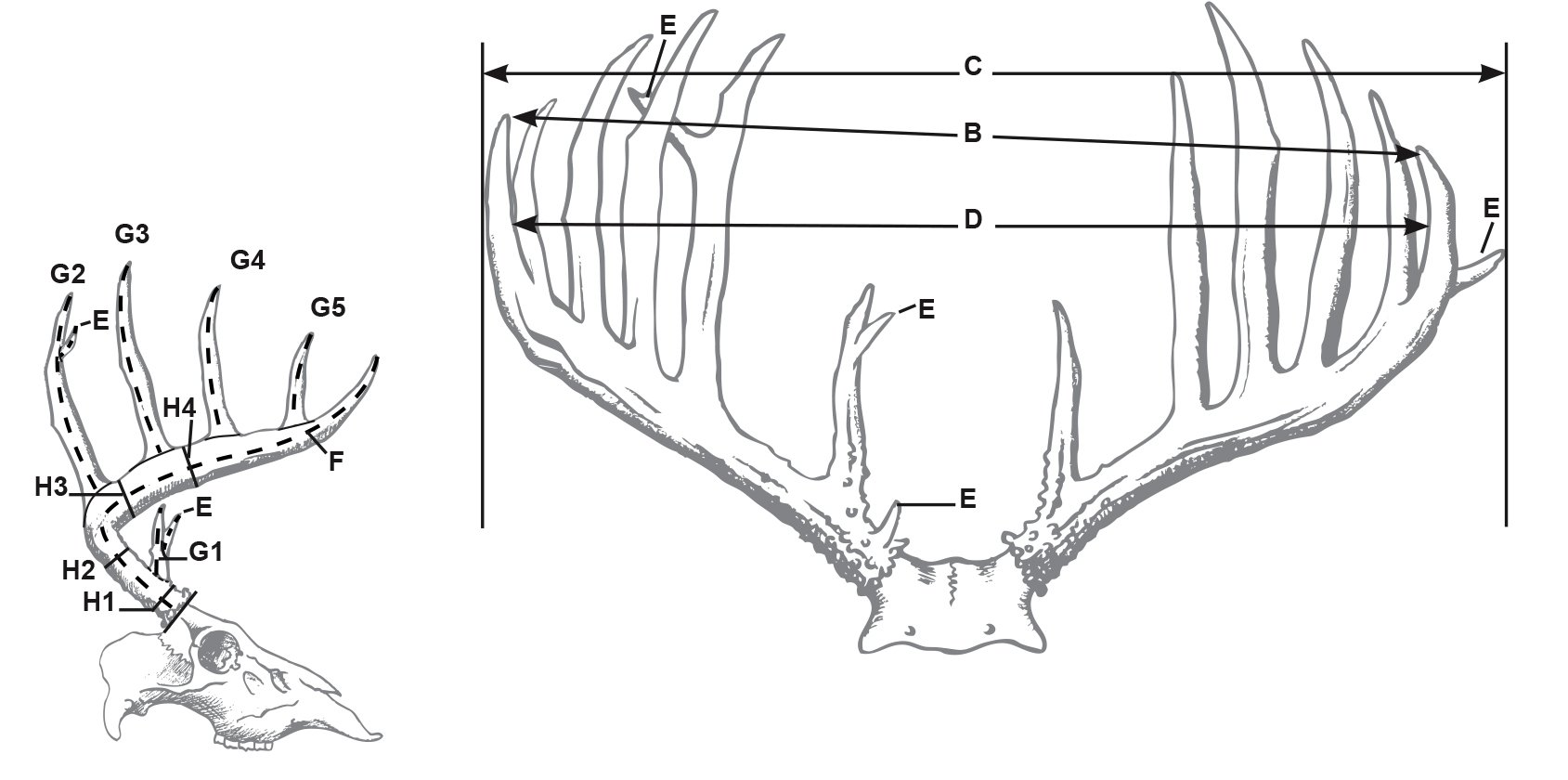How to Score Whitetail Deer and Mule Deer: A Hunter's Guide
Scoring a Whitetail or Mule Deer is an essential skill for hunters By assessing the size and quality of a deer's antlers, you can gain valuable insights into the animal's age and health, which can help you make informed decisions while hunting. In this article, we will discuss the basics of scoring Whitetail and Mule Deer, the key measurements and calculations involved, and provide links to websites that offer valuable resources for scoring deer.
Scoring Whitetail Deer:
Whitetail deer are among the most popular big game animals in North America. Scoring their antlers is a common practice among hunters. The Boone and Crockett Club, Pope and Young Club, and Safari Club International have established scoring systems for measuring the antlers of Whitetail Deer. Here are the primary steps for scoring a Whitetail Deer:
Count the Points: The first step is to count the number of points on each antler. Points are the tines that extend from the main beam. For Boone and Crockett, the typical method for counting points is to classify them as "typical" or "non-typical." Typical points grow symmetrically, while non-typical points deviate from the norm.
Measure Main Beam Length: Measure the length of the main beam from the base to the tip, following the curvature of the antler.
Measure the Spread: Measure the distance between the main beams at their widest point. This measurement is often referred to as the "inside spread."
Measure Circumference: Measure the circumference of the antler beams at four locations: the tip, the point where the antler begins to curve upward, the midpoint, and the base. Add these measurements together to calculate the total circumference.
Calculate Gross Score: Calculate the gross score by adding the points, main beam length, inside spread, and circumference measurements.
Deductions: Deduct points for any abnormal or non-typical points according to the scoring system guidelines. These deductions vary between scoring organizations.
Final Score: Subtract the deductions from the gross score to arrive at the final score.
Scoring Mule Deer:
Mule Deer, known for their distinctive "mule-like" ears and impressive antlers, are another sought-after species for hunters. The Boone and Crockett Club's scoring system is commonly used for Mule Deer. Here are the steps to score Mule Deer:
Count the Points: Similar to Whitetail Deer, count the number of points on each antler, distinguishing between typical and non-typical points.
Measure Main Beam Length: Measure the length of the main beam from the base to the tip, following the curve of the antler.
Measure the Spread: Measure the inside spread, which is the distance between the main beams at their widest point.
Measure Circumference: Measure the circumference at the tip, the point where the antler begins to curve upward, the midpoint, and the base of the antler. Sum these measurements to calculate the total circumference.
Calculate Gross Score: Add the points, main beam length, inside spread, and circumference measurements to obtain the gross score.
Deductions: Deduct points for non-typical points or other irregularities following the Boone and Crockett scoring guidelines.
Final Score: Subtract deductions from the gross score to determine the final score.
Online Resources for Scoring Deer:
For in-depth guidance on scoring Whitetail and Mule Deer, several websites provide valuable information and resources:
Boone and Crockett Club (https://www.boone-crockett.org/): The Boone and Crockett Club offers detailed information on their scoring systems, along with downloadable score sheets and instructional videos.
Pope and Young Club (https://www.pope-young.org/): For those interested in archery hunting and scoring, the Pope and Young Club provides resources and scoring information specifically tailored to archery kills.
Safari Club International (https://www.safariclub.org/): Safari Club International offers information on their scoring system, which also includes categories for non-hunter observers and youth hunters.
Conclusion:
Scoring Whitetail and Mule Deer is an important skill for hunters and wildlife enthusiasts, as it allows for a deeper understanding of the animals and aids in conservation efforts. By following established scoring systems and utilizing online resources, you can accurately assess and appreciate the antlers of these magnificent creatures while promoting ethical and sustainable hunting practices.




